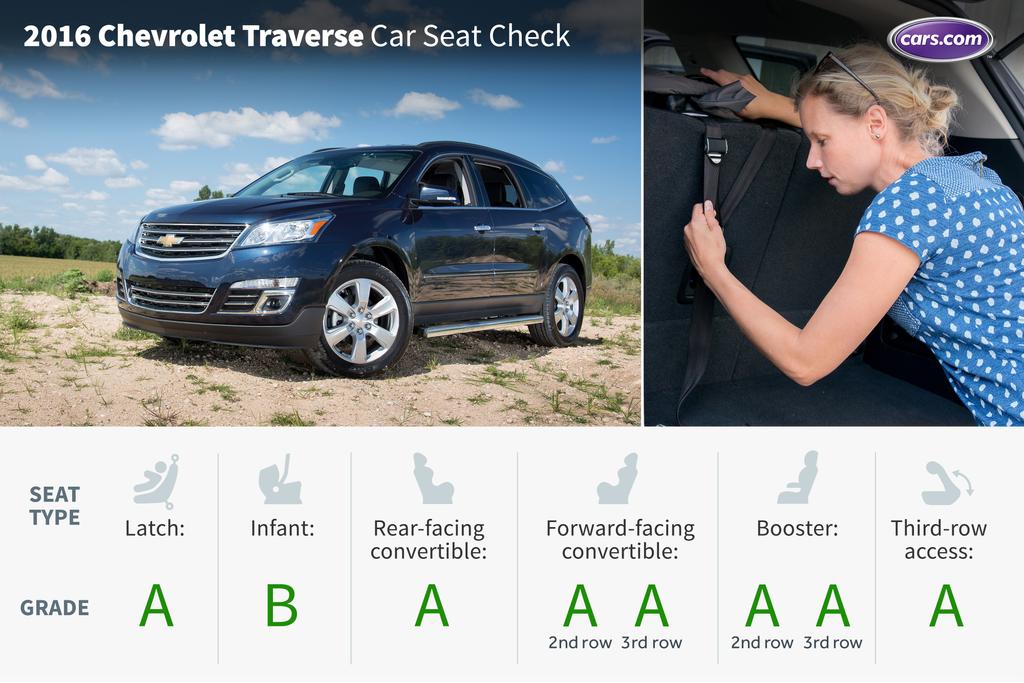
Chevrolet's Traverse has one of the biggest cargo areas in the three-row SUV class. That coupled with a roomy second row and newly standard OnStar 4G LTE connectivity and Wi-Fi hot spot functionality (data subscription required) should really make it appeal to families. The Traverse seats seven or eight passengers on three rows of seats, and we tested a top-line LTZ model with second-row bucket seats.
How many car seats fit in the second row? Two
How many car seats fit in the third row? Two
What We Like
- The second row's two sets of lower Latch anchors are visible and easy to use. The tether anchors are midway down the seatbacks; they're clearly marked and also easy to use. In the third row, there are no Latch anchors and one easy-to-access top tether anchor. We had no trouble installing our forward-facing convertible in the third row using the seat belt.
- In both rows, the booster fit well despite the fixed head restraints, and the seat belt buckles are on stable bases, which are easier for kids to grasp and use.
- Third-row access is great. The second-row seats collapse and slide far forward for a large opening. The step-in is tall but our model was equipped with optional running boards.
- In both rear- and forward-facing modes, the convertible went in easily and had plenty of room. In forward mode, the fixed head restraint pushed the convertible's back forward, but not enough to negatively impact installation and fit.
What We Don't
- We had to move the front passenger seat forward a bit to accommodate the infant safety seat.
- When installing our forward-facing convertible in the third row, we had to pull the shoulder belt portion of the seat belt down from the ceiling, blocking the driver's rear visibility.
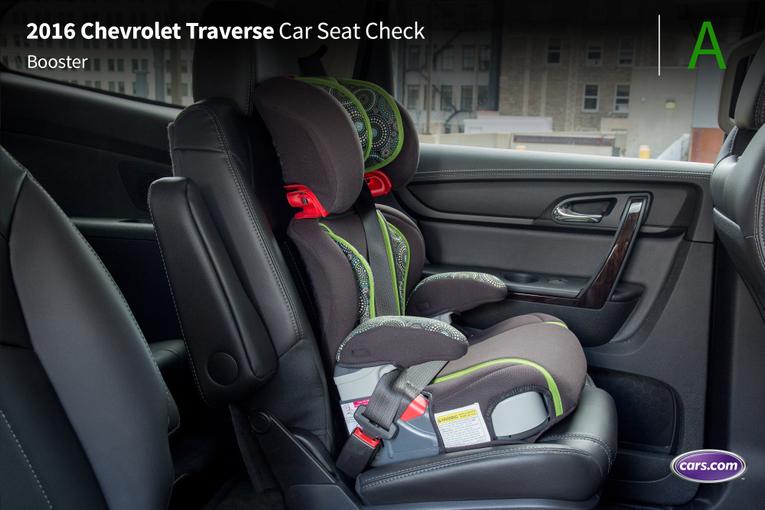
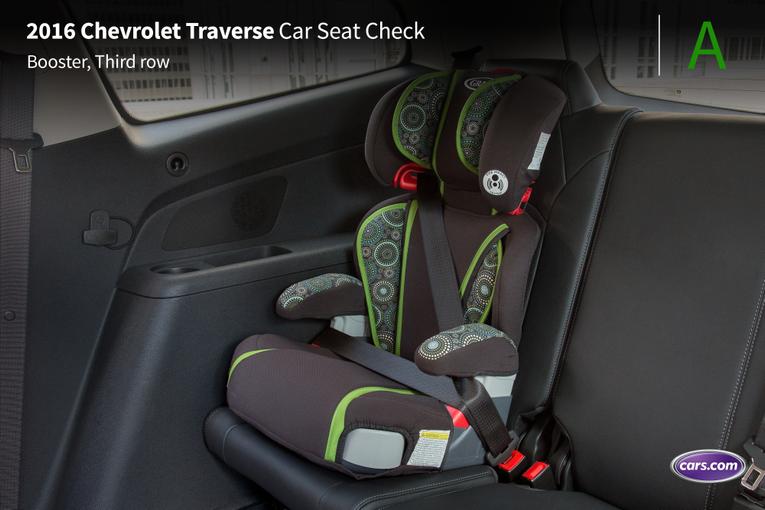

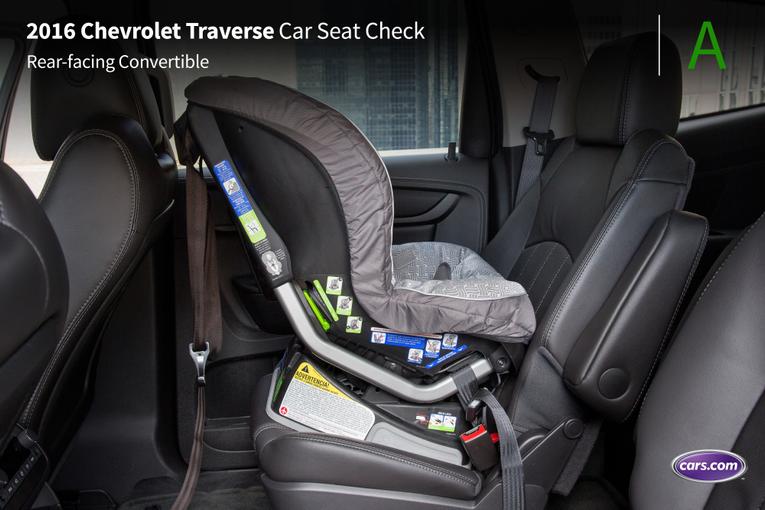
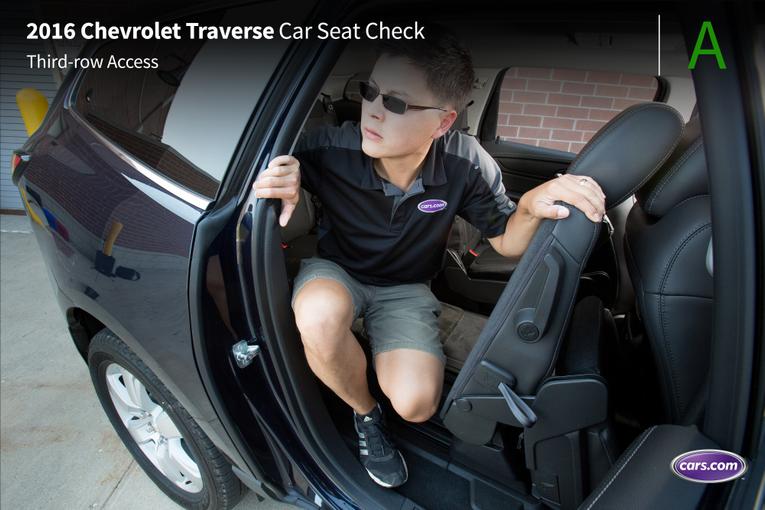
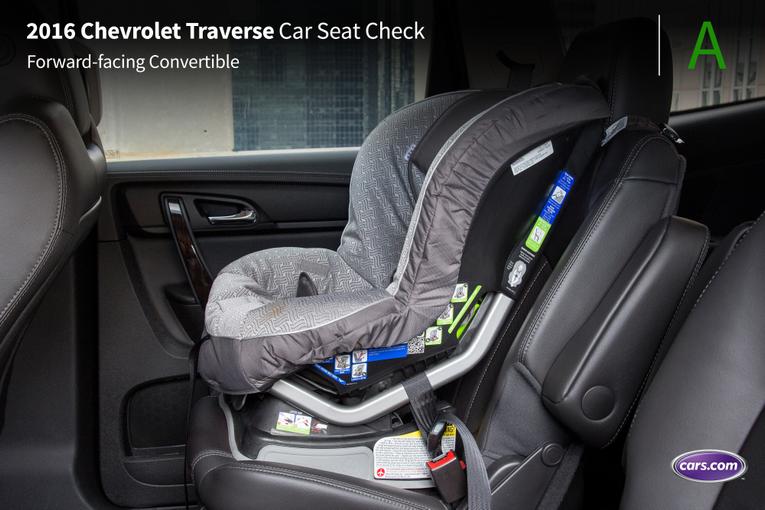
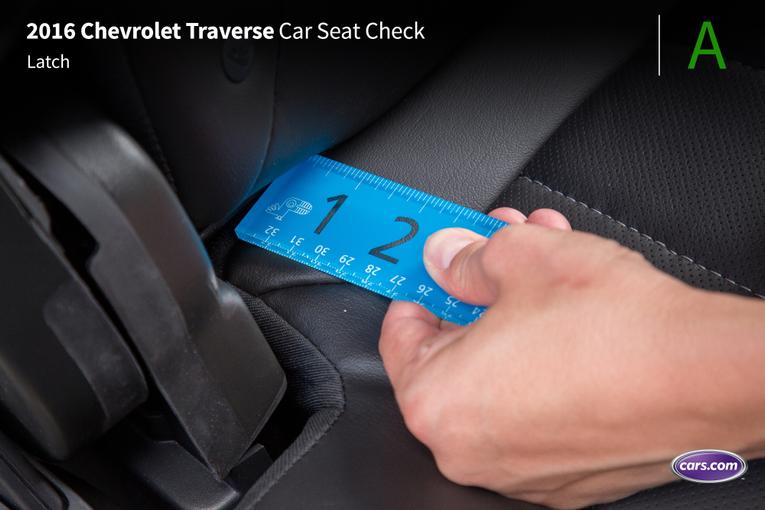
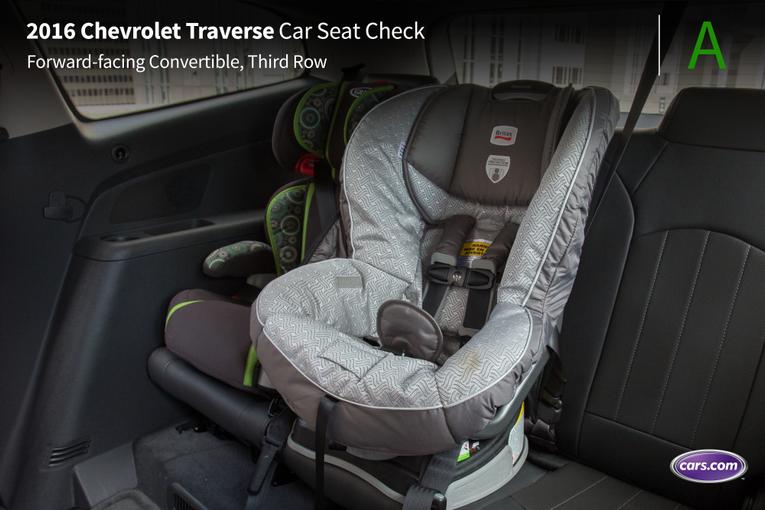
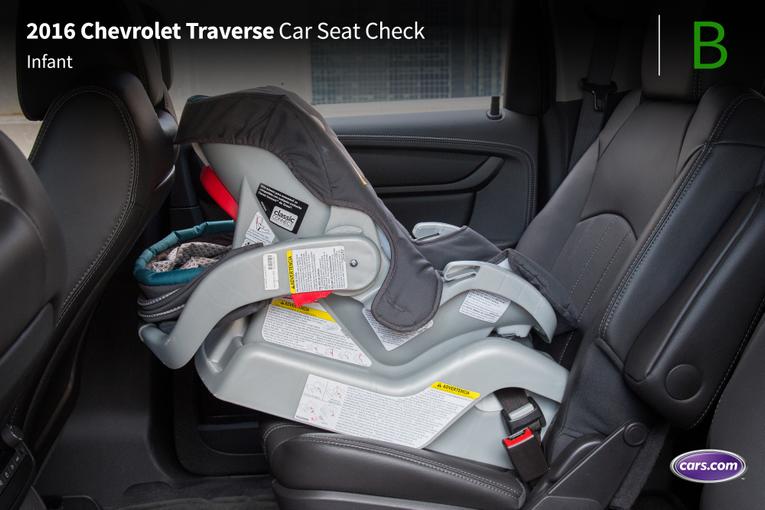
Grading Scale
A: Plenty of room for the car seat and the child; doesn't impact driver or front-passenger legroom. Easy to find and connect to Latch and tether anchors. No fit issues involving head restraint or seat contouring. Easy access to the third row.
B: Plenty of room. One fit or connection issue. Some problems accessing third row when available.
C: Marginal room. Two fit or connection issues. Difficult to access third row when available.
D: Insufficient room. Two or more fit or connection issues.
F: Does not fit or is unsafe.
About Cars.com's Car Seat Checks
Editors Jennifer Geiger and Jennifer Newman are certified child safety seat installation technicians.
For the Car Seat Check, we use a Graco SnugRide Classic Connect 30 infant-safety seat, a Britax Marathon convertible seat and Graco TurboBooster seat. The front seats are adjusted for a 6-foot driver and a 5-foot-6 passenger. The three child seats are installed in the second row. The booster seat sits behind the driver's seat, and the infant and convertible seats are installed behind the front passenger seat.
We also install the forward-facing convertible in the second row's middle seat with the booster and infant seat in the outboard seats to see if three car seats will fit; a child sitting in the booster seat must be able to reach the seat belt buckle. If there's a third row, we install the booster seat and a forward-facing convertible. To learn more about how we conduct our Car Seat Checks, go here.
Parents should also remember that they can use the Latch system or a seat belt to install a car seat, and that Latch anchors have a weight limit of 65 pounds, including the weight of the child and the weight of the seat itself.
No comments:
Post a Comment